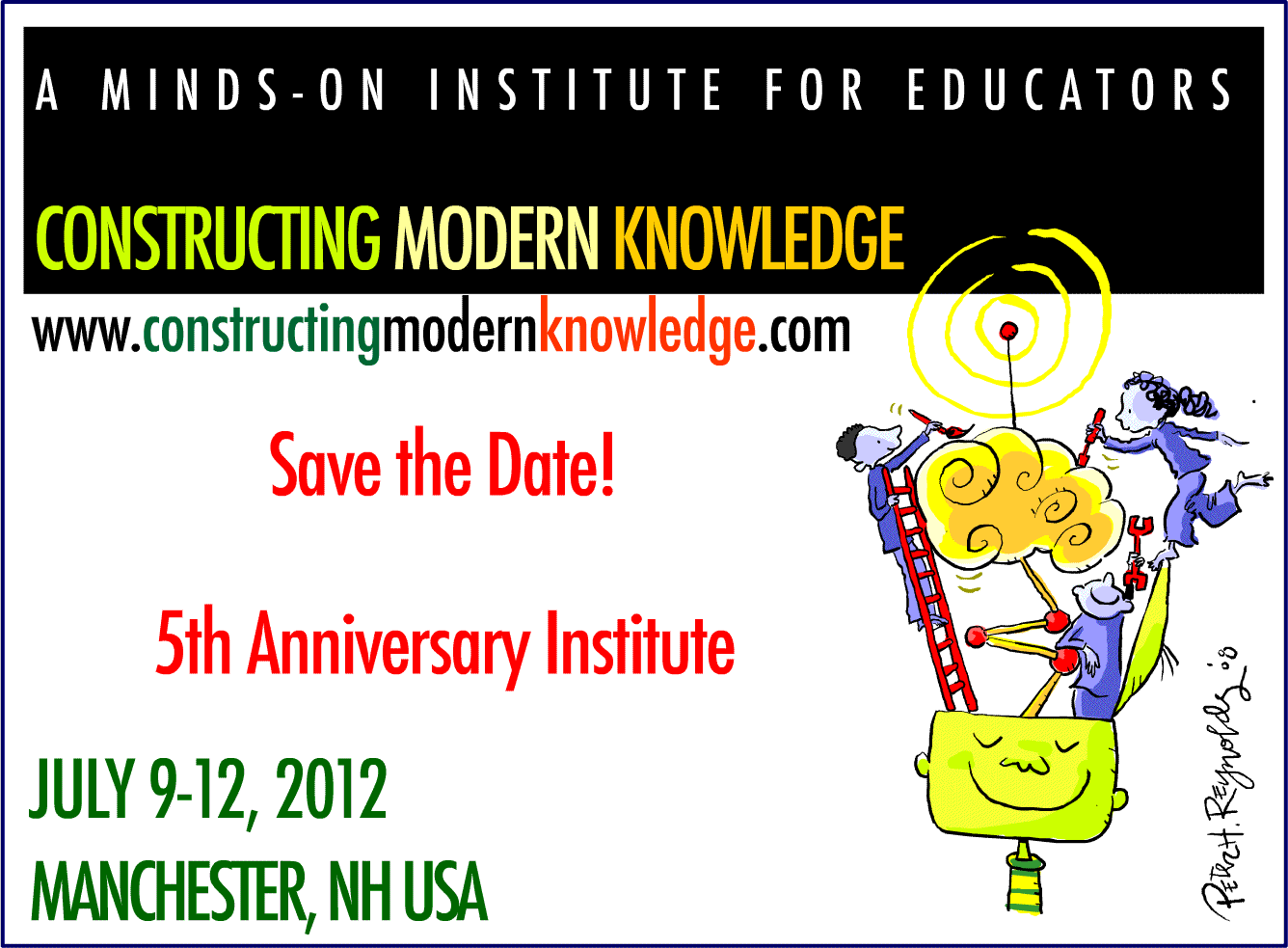“School is a place where students learn largely by working on projects that come from their own interests — their own visions of a place where they want to be, a thing they want to make or a subject they want to explore. The contribution of technology is that it makes possible projects that are both very difficult and very engaging.
It is a place where teachers do not provide information. The teacher helps the student find information and learn skills — including some that neither knew before. They are always learning together. The teacher brings wisdom, perspective and maturity to the learning. The student brings freshness and enthusiasm. All the time they are all meeting new ideas and building new skills that they need for their projects. Some of what they learn belongs to the disciplines school has always recognized: reading, writing, mathematics, science and history. Some belongs to new disciplines or cut across disciplines. Most importantly, students and teachers are learning the art and skill and discipline of pursuing a vision through the frustrating and hard times of struggle and the rewarding times of getting closer to the goal.”
Papert, S. & Caperton, G. (1999). Vision for Education: The Caperton-Papert Platform. Essay written for the 91st annual National Governors’ Association meeting held in St. Louis, Missouri in August of 1999.
“For many children traditional school is a very dangerous place because you can be humiliated, embarrassed – scared of being found out that you don’t know how to do something. Whereas with the Turtle, you can play with it by yourself. It’s okay that you don’t understand it because you found out that you didn’t understand it. You wanted the Turtle to do something, and it did something else, but understanding why it did its thing is the proper way to lead you into having it do your thing. You don’t have to think that you are stupid; you can think, this dumb Turtle, if you like. There is a kind of human quality about being able to interact with the Turtle when things go wrong. This is totally absent in school math for most kids. Children at computers very clearly demonstrate the contrast between the confrontational style of people who like to plan and decide exactly what should happen and make that happen versus other people who like a more negotiational, consensual, interactive way of thinking. School math, with its emphasis on detail, forces the confrontational, compulsive-obsessive style. There is no play. There is absolute right.”
Papert, S. (1985). Interview. Omni Magazine. October 1985. pp. 98-104, 160.
For years I had a terrible 53rd generation photocopy of this article. So, when I recently found a copy of the October 1985 issue of Omni Magazine for sale on eBay, I snapped it up and scanned it for academic purposes. That’s right, there was a major feature-length interview of Seymour Papert in a magazine owned by Bob Guccione!

“But there is a world of difference between what computers can do and what society will choose to do with them”.
Papert, S. (1981) Mindstorms: Children, Computers and Powerful Ideas. NY: Basic Books. Page 5.
Quote contributed by Dr. Eleonora Badilla Saxe of the University of Costa Rica.
“Many children who have trouble understanding mathematics also have a hopelessly deficient model of what mathematical understanding is like. Particularly bad are models which expect understanding to come in a flash, all at once, ready made. This binary model is expressed by the fact that the child will admit the existence of only two states of knowledge often expressed by “I get it” and “I don’t get it.” They lack—and even resist—a model of understanding something through a process of additions, refinements, debugging and so on. These children’s way of thinking about learning is clearly disastrously antithetical to learning any concept that cannot be acquired in one bite.”
Papert, S. (1971) Teaching Children Thinking. In Contemporary Issues in Technology and Teacher Education, 5(3/4), 353-365.
Also known as MIT Artificial Intelligence Laboratory Memo 247 and Logo Memo 2. (October 1971)
This paper was presented at a conference as early as 1970 and its origins go back to 1968.